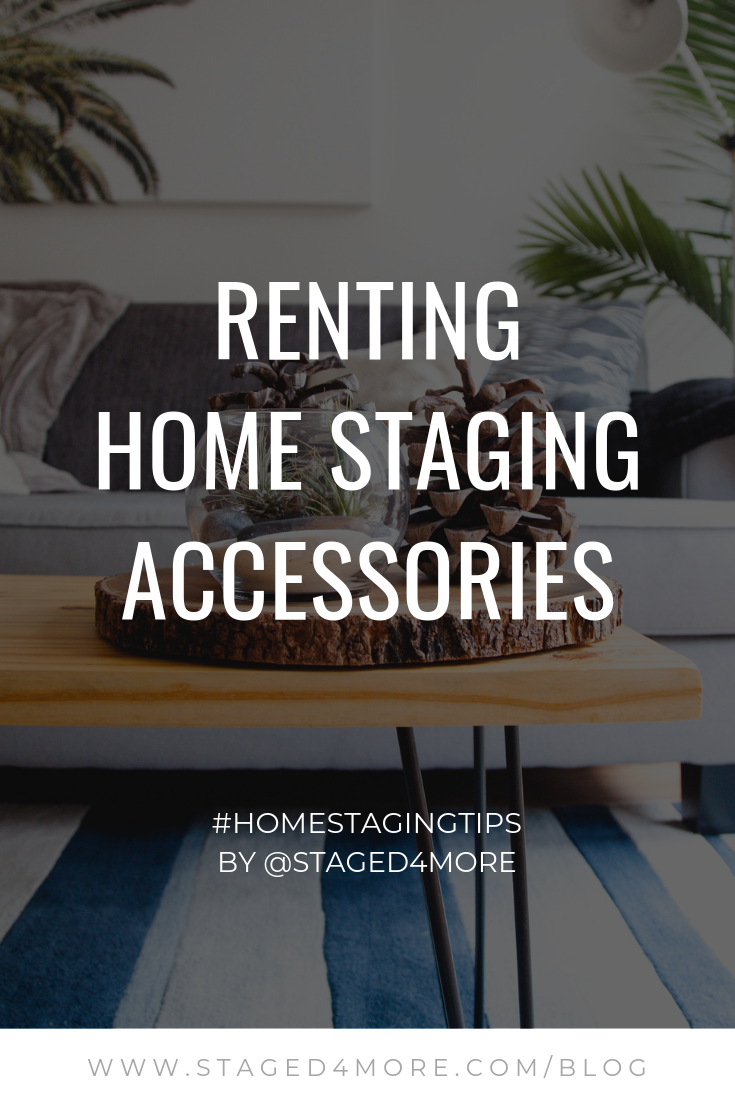How to Charge for Home Staging Inventory
Hey there!
I'm Cindy
Founder of Staged4more.

Recently, I was asked a question by a blog reader that I thought was important to highlight. It is a very common mistake that newer home stagers make, that they are not charging what they should be when they are first starting out in their home staging business.
This is a very common cause of why new stagers lose money on their home staging business.
Hi, Cindy!
I am an interior designer and have been home staging for about two years for a local realtor. Typically, I use what the homeowner has to stage, but occasionally I will stage empty homes. The realtor will ask me to accessorize the kitchen, laundry room, and bathrooms. We don’t bring in any furniture. I charge hourly for my design time, but haven’t been charging a rental fee for the use of my accessories. Most of the vacant homes have sold quickly, but lately a few have remained on the market and I’m low on inventory. Therefore, I’m going out and buying more accessories to stage with and I feel I’m losing money.
What would be your advice on charging a rental fee for accessories and how should I best approach this with the realtor without losing their business? Thank you!
— Jill
There are 4 issues here
-
Just accessorizing is not staging. Staging is about creating an aspiring lifestyle that potential buyers want to live. Just by putting accessories in the home simply is not enough to create that lifestyle the buyers want to buy into.
-
Jill is already losing money by not charging for the rental of her home staging accessories. Anything you are using in the home should be included in your pricing. It costs money to buy inventory, doesn’t it? So it needs to be included in the overall job costs. This is why you are already losing money by comping those items for your real estate agents.
-
Existing clients may get the sticker shock when raising the price: Jill now needs to charge the real estate agent clients what she hadn’t been but should’ve been charging. She is afraid to make clients angry and lose the work.
-
These current clients may not be your ideal client.
Pricing Your Home Staging Inventory Rental

In general, you will want to look at how quickly you can get back your initial return on this investment to determine a percentage to charge. Generally, I see people fluctuate between 15% to 30%.
The full calculation can be complicated because you need to factor in your overhead and operating expenses into your job costs, not just purely what it costs to stage this one house.
So right out of the gate, you are already losing money because you are only charging for the labor costs.
The other major issue is depreciation. The moment you left the store with your new inventory, it immediately depreciates. You will never be able to sell it for the price you bought it for, and every year you own it, it depreciates even more.
Ultimately, this is a conversation best to have with your CPA and bookkeeper because they will be familiar with your finances and your business model. A depreciation schedule may be needed and your CPA and bookkeeper should be able to help you find a break-even number for your work to calculate your job costs appropriately.
When to Raise Prices
There are many ways to raise your price. I recommend doing it gradually, like 5-10% over a period of time. If the price is raised too quickly, clients will balk and often leave, because they are not seeing the value being added to justify the price increase in such a short time period.
Now is always better than later.
When clients complain, you can explain that the cost of doing business has increased. While you may need to eat some costs in the short term, it is still better than not raising your prices at all.
Are You Working with Your Ideal Client?
The final issue here is if you are working with your ideal clients.
If your clients will leave simply because you raised your price, they are not a great fit for you. Because if someone cheaper comes along, you will be replaced anyway.
In order for you to have longevity in the marketplace, you need to stop thinking about competing based on price. You have to compete base on the value you provide to your clients. This goes back to issue number one: what you are providing is not staging. In order for your clients to stay loyal to you, they have to see the value you bring to the table.
Simply by adding accessories to rooms in a vacant home does not add to the overall appeal of the home too much. It is not building that aspirational lifestyle the home buyers want. It is also not the complete presentation.
Do you think singers like Lady Gaga or Beyonce only goes on stage with some nice clothes? No, they’ve got head-to-toe show-stopping everything, that’s what people are paying for. It is the same in real estate. People are paying top dollars for top presentation so that they can sell the house for top dollars. A nice hand soap and towels here and there are not going to cut it.
Not to mention this is pretty easy to accomplish that you can be easily replaced by someone cheaper, including the agents themselves.
If you want to add home staging as an additional stream of income as an interior designer, I recommend having a firm grasp of what home staging truly is and how you can incorporate it into your existing business model successfully.
Ultimately, clients are not just hiring someone who can place accessories into the home. They are hiring experiences and expertise. Those are what make you unique and valuable in their home selling process. Leverage that!
What do you think about my response? Tell me in the Comments below!
Got more questions about pricing? Check out our Pricing Guide.
✨Not sure how to price your home staging project? How to budget the costs of your home staging project?✨
We’ve put a Pricing Guide together just for you! We designed the Guide for home stagers who need some help with putting together their home staging proposal, pricing out the home staging project, and gaining a better understanding of how to price their home staging services.
The guide will take you through the common traps that home stagers fall into when it comes to pricing their home staging projects and how to build profitability into your home staging business. The Pricing Guide also includes customizable Pricing Worksheets for you to work out your own numbers.
What Are You Looking For?
Company
About
Join the School
Events
Podcast
Home Stager Directory
International Home Staging Awards
StagerCon 2023
Subscribe to our newsletter
Contact
Student Log-In
Teach on Staged4more
Terms & Privacy Policy
Affiliate Disclosure
Contribute & Ads
Sponsorship
Join Us
FAQs
Become an Ambassador
Contact
Website Design by Local Creative
© 2025 Staged4more. All Rights Reserved
